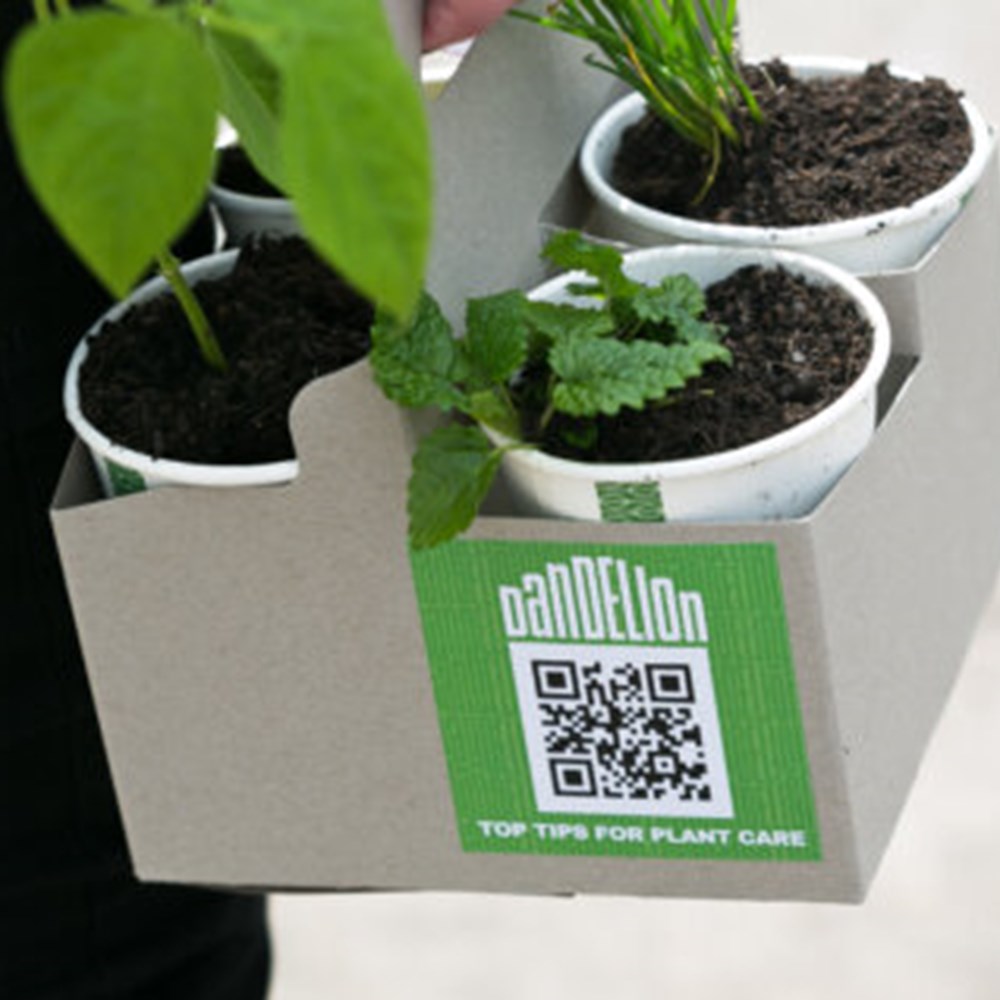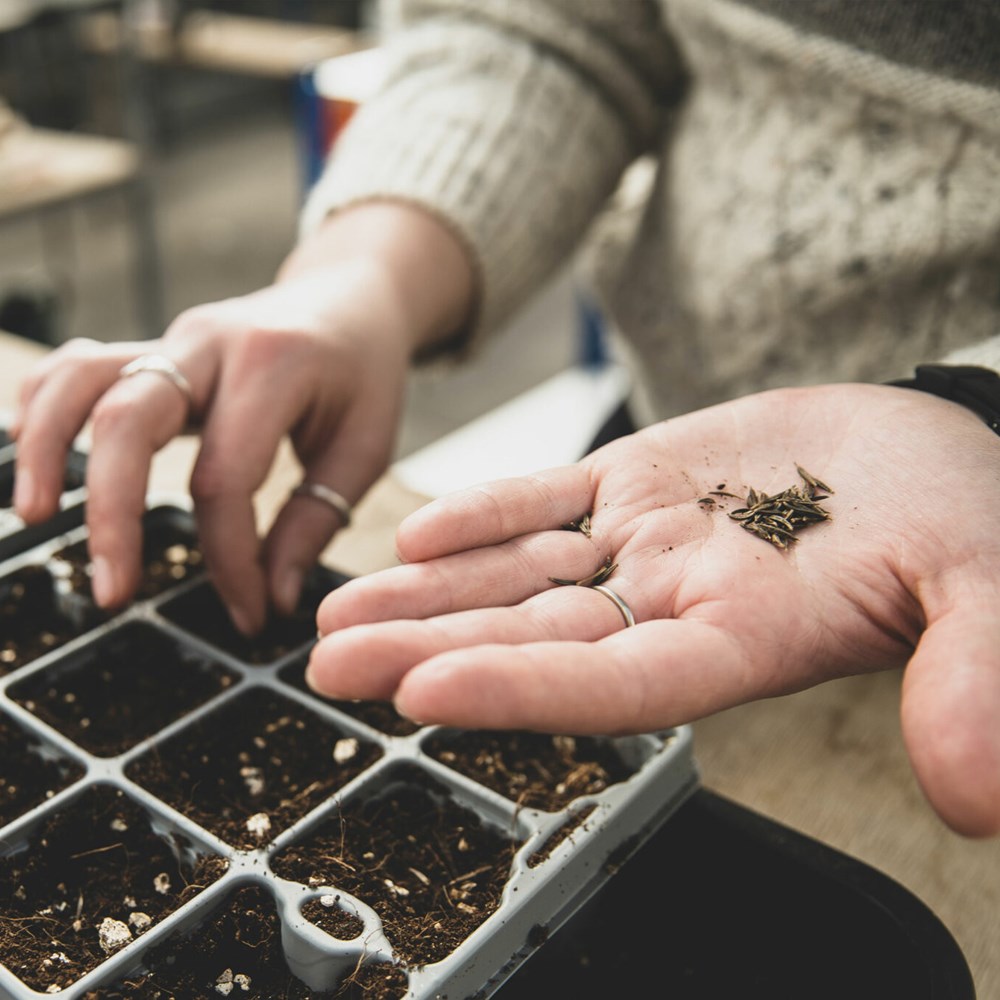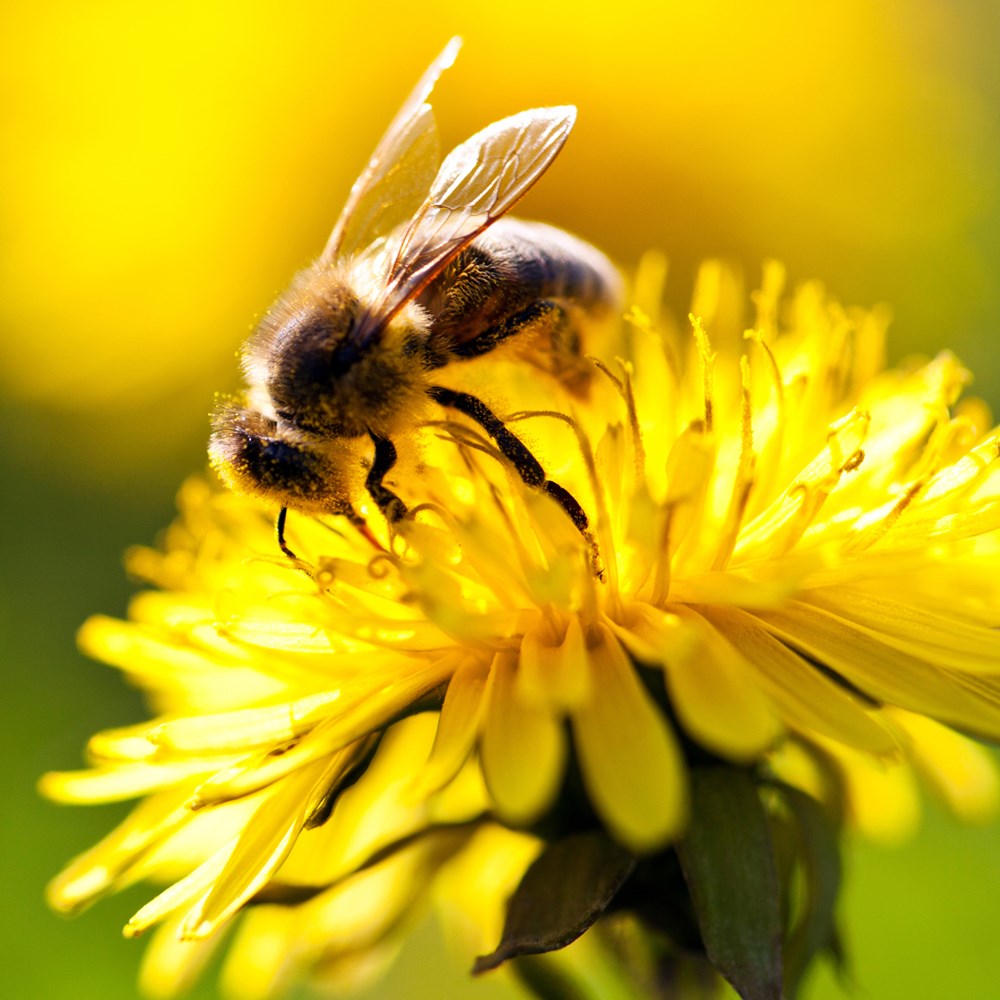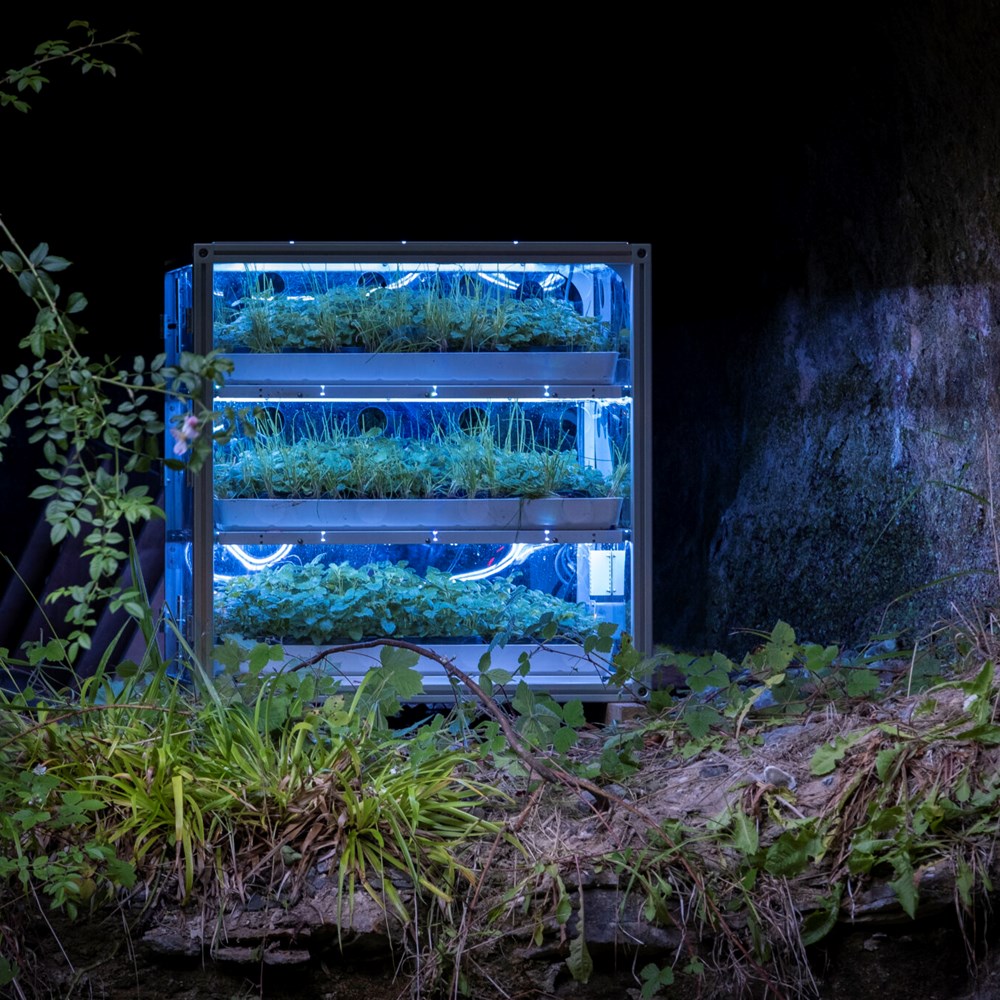Pests & Diseases
In this article we’ll have a quick look at some pests and diseases on common crops, including those given away at our Free for Alls, and the current thinking on solutions to deal with them.

Firstly though, as with most living things, plants are most vulnerable when they’re young. Mother plants have helpfully provided a little stored food within the seed to get your plant started. You can help them along by following the sowing instructions on the packet and providing the right light, heat, water and soil conditions, and feeding as required.
Once sprouted, seedlings can be prone to a fungal infection called damping off. Avoid this by using really clean pots, trays and fresh compost. Don’t sow the seeds too densely, and avoid over-watering or splashing the seedlings. Ensure good air circulation especially in warm weather. Once it’s time to prick out the seedlings (to move them into bigger pots or into the ground), do so gently and by holding only the seed leaves, never the stem.
At this point slugs and snails can do their worst damage. They seem able to eat whole seedlings and new shoots in the blink of an eye. Mature, healthy plants can thole a bit of nibbling and are better able to fight off pests and diseases. In either case though, it’s wise to check over your plants regularly. The quicker you spot a problem, the quicker you can remedy it. In my garden, it’s slugs. So, I’ve tried setting crushed egg-shells, sheep wool pellets and beer traps near my plants and sometimes at night I pick them off and find a new home for them elsewhere in the garden.
- Potatoes: blight shows up as brown patches, mould and fallen stems. It mostly affects main crop varieties grown into the later months. Disease-resistant varieties and preventative chemical treatments are available but if your crop develops blight, cut off and compost or burn the affected stems. The potatoes themselves should be unaffected. Black leg, as the name suggests, causes the stems to blacken and keel over. Eelworm (cyst nematode) and wireworms are soil-borne pests. The former are tiny but weaken plants, the latter feast on growing tubers. Practicing crop rotation helps to minimise pests build up year upon year. strongly scented chives, geraniums and fennel deter slugs.
- Tomatoes are mostly grown in glasshouses where sap-sucking insects like whitefly, red spider mite and aphids can be a problem. These cause damage directly and introduce viruses. Curling, distorted, yellowing leaves are a giveaway, as well as the spiders’ webs. Pick or rub them off or squirt with plain or slightly soapy water to knock them off, spray with insecticidal soap. If the weather is fine, you could put infected plants outside to limit the spread but also conditions and natural predators might clear up the problem for you. However, keeping your glasshouse and equipment clean and tidy of old plant material where pests and spores can moulder, and well-ventilated in hot weather is important too. Companion planting of marigolds is often used around both glasshouses and vegetable plots to deter aphids. Watering and temperature are critical for tomatoes – both need to be steady throughout the growing season, so as to avoid the fruit splitting or blossom end rot.
- Lettuce: slugs and snails will quickly make a meal of your lettuce. If you can keep them and aphids (as above) at bay, and your soil is rich in organic matter, water only into the soil, not over the plant, then you can hope to avoid downy mildew (yellowing patches on the tops of leaves and whitish fuzz underneath) and grow a good crop. Companion plants of chives and poached-egg plant are said to encourage beneficial predatory insects.
- Chives: a well-fed soil, moist but well-draining if in shade (or water regularly during dry spells if growing in full sun) should see easy-growing chives right. However, if the long leaves turn patchy brown, this could be rust, in which case remove and compost or burn the infected plant material.
- Lemon balm: this was chosen as a Free for All plant as its excellent for beginner gardeners. It’s pretty tough; so, well-drained soil in a fairly sunny spot (to replicate the plant’s native Mediterranean-West Asia climate) should be enough to see your small plant grow sizeably this summer. In warm weather if there isn’t good air-flow, or if the plant is thirsty, powdery mildew (a white powder over the leaf surfaces; also on fruit crops, peas and ornamental crops) can occur but by watering into the soil and regularly picking the leaves through to September, this shouldn’t be a problem. The leaves can be enjoyed fresh as a hot tea, in cold drinks, salads and baking or dried for storage and later use.
- Carrots - carrot root fly is the principal pest – or at least the larvae which will feed underground on your precious crop. Out-smarting these low-flying pests involves growing aloft in raised beds and containers (handy too to create depth and if you haven’t the ideal light, sandy soil) or creating a barrier, either on the soil surface around each stem, or a fine-gauge net or fleece right around the plants. Moving or touching your carrots will emit their scent, attracting in this pest, so avoid contact as much as possible. Companion planting of marigolds and Nigella might work instead to mask the giveaway smell.
- Brassicas: changing which crops you grow annually in any space, known as crop rotation, helps to eliminate soil-borne pests and diseases. But you might specifically grow brassicas – cabbages, kale, sprouts etc – after legumes benefit from the nitrogen legumes fix into the soil. Growing brassicas under netting will help to keep off unwanted insects and pigeons, and a finer mesh keeps off flea beetles. Brassicas are subject to club root disease unless the soil is sufficiently well-draining and alkaline: add hydrated lime or calcified seaweed at least a month before planting to bring up the pH level. Weed around your plants and cut down old stems at the end of the season to prevent overwintering aphids and cabbage
As home gardeners, we have a choice about how to deal with the inevitable pests and diseases that share our gardens and visit our plants. But we can take a leaf out of agriculture’s ‘integrated pest management’ approach.
This considers how all cultivation practices can be done practicably, economically and sustainably for the future. It considers preventative care, not just eradicating pests once they’ve arrived. And arriving they are e.g. Dutch elm disease in the 1970’s, Phytophthera, cankers, moths, bacteria and more recently zig zag elm saw fly and eight-toothed spruce bark beetle. Pests often coming in with horticulture, forestry and packaging products, so this is another reason to buy locally, ideally within 40 miles, if possible.
You can think of integrated pest management like a triangle with the greater input being the foundation layer of cultural controls with physical pest control, then biological and finally chemical controls at the top.
- Cultural – Keeping the garden, tools, equipment clean and tidy; scrupulously clean and/or disinfect any cutting tools. Weeding and mulches to supress competition, to retain moisture and to keep your fruit and veg off wet soil; practicing crop rotation and planting the right crops and varieties for your garden or plot’s conditions.
- Physical – inspect your plants regularly. Remove infected, dead and damaged plant material to limit damage to the plant and prevent spread. Setting barriers to keep pests off.
- Biological – are perhaps more widely used in commercial horticulture under glass, but retail bio-controls for slugs and for indoor pests are available for gardeners too.
- Chemical – in past times, it would have been the norm to turn to potions and powders to kill off anything thought harmful. Nowadays, due to environmental science, public opinion and greater regulation, the use of and the array of pesticides is declining. Instead, we’re learning to accept pests to some extent, and to deal with them, and with plant diseases and disorders in new ways.
Author: Helen McMeekin
Acknowledgments
- Cox & Beaton. 2020. Fruit & Vegetables for Scotland. Birlinn.
- https://www.defenders.co.uk/
- Halstead & Greenwood. 2009. RHS Pests & Diseases. DK.
- Herb Society of America. 2007. herbsociety.org
- https://planthealthaction.org/
- rhs.org.uk
Explore more

Dandelion Resources
Get growing advice, seasonal suggestions and celebrate the joys of looking after plants.

Dandelion Project
With the aim of re-establishing Harvest as an event on the national calendar, Dandelion brought together community development, horticulture, live music, learning, sustainable thinking and innovative arts practice to support the people of Scotland to sow, grow and share together.

Dandelion Events
Dandelion culminated in in over 500 events as part of the largest-ever creative celebration of Harvest staged across Scotland.

Dandelion Results
Dandelion's Unexpected Gardens sprang up all across Scotland and continue on today event after our programme has ended.
